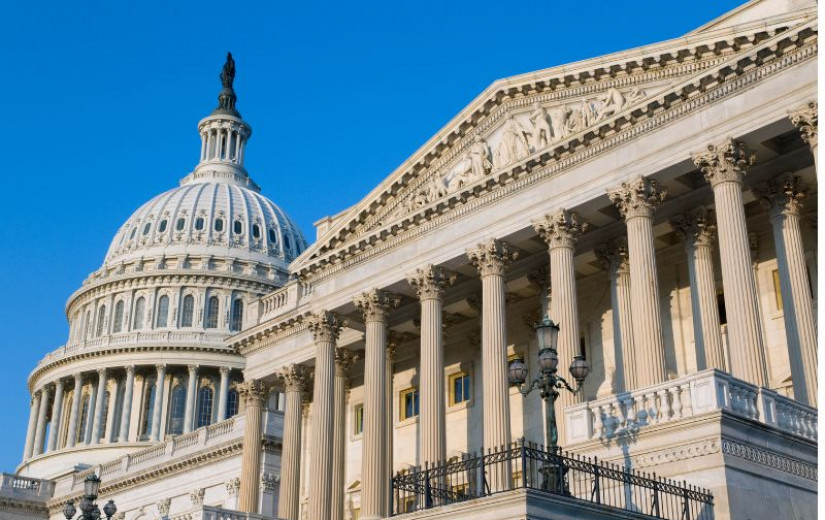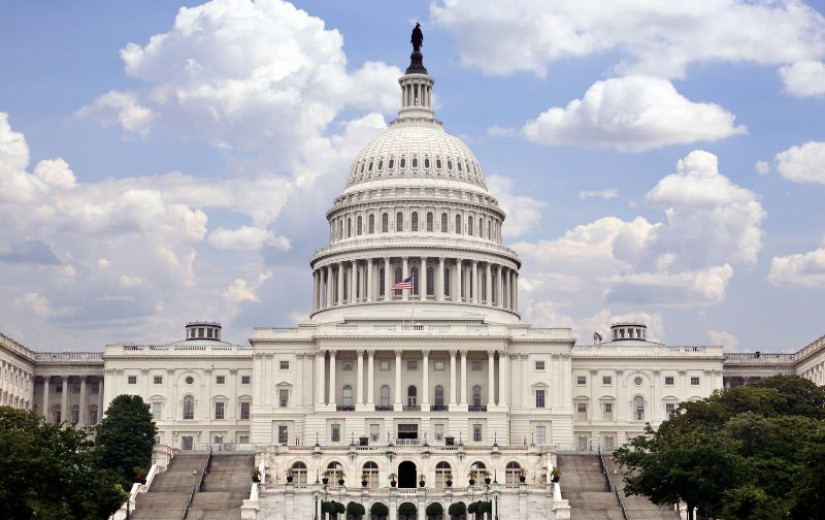
The first part of this series deconstructed the “vibe” phenomenon, tracing its origins from “Vibe Coding” to the emergence of “Vibe Marketing.” Now, the focus shifts to the strategic imperatives driving this new approach, the AI-powered toolkit enabling it, and real-world examples of businesses successfully riding this wave.
The Strategic Imperative of Vibe Marketing in the AI Era
The current moment is ripe for Vibe Marketing due to two primary factors. Firstly, AI capabilities, particularly in areas like natural language understanding, content generation, and even emotional sentiment analysis, are maturing at an astonishing rate.1 AI can now handle tasks that were once the exclusive domain of human marketers, from drafting copy to generating visuals and personalizing messages at scale.
Secondly, this technological leap coincides with a growing consumer demand for more genuine, personal, and emotionally resonant connections with brands.1 In an increasingly noisy and often impersonal digital world, audiences are fatigued by generic messaging and intrusive advertising. Traditional marketing methodologies, often characterized by long development timelines and broad-strokes campaigns, are proving less effective in capturing attention and fostering loyalty.2 Vibe Marketing offers a pathway to bridge this gap by leveraging AI’s efficiency to deliver the personalized and authentic experiences consumers crave, with the speed required by today’s market.
The Irreplaceable Human Element: Strategy, Creativity, Ethics
A critical point to underscore is that Vibe Marketing does not attempt to replace human marketers with AI. Instead, it attempts to redefine and elevate the role of humans by complimenting their natural strengths. AI, for all its advancements, lacks genuine emotion, nuanced cultural understanding, ethical judgment, and true, out-of-the-box originality.3 These uniquely human attributes become even more critical in a Vibe Marketing paradigm, where human roles evolve to focus on several key areas.
Chess grandmaster Garry Kasparov noted that human-AI teams consistently outperformed both human-only and AI-only players…
For instance, human marketers are crucial for setting strategic directions by defining “core vibes,” establishing overarching campaign goals, gaining a deep understanding of the target audience’s needs and emotional drivers, and making high-level decisions about brand positioning. Furthermore, in the realm of creation and curation, while AI can generate options for ad copy and visual concepts, human insight and good taste are still needed for breakthrough concepts. Human marketers need to inject genuine creativity, curate the best outputs generated by AI, and ensure all content aligns with the brand’s taste and quality standards.2 Ethical oversight is also paramount; human marketers are responsible for ensuring that AI-generated content is fair, unbiased, accurate, compliant with regulations, and does not mislead or manipulate consumers, thereby acting as the ethical compass for the brand’s AI-assisted communications.4
This dynamic positions AI as a powerful amplifier of human capability rather than a wholesale substitute. The Vibe Marketing approach fosters what can be described as a “centaur” model for marketers, drawing an analogy from chess where human grandmaster Garry Kasparov noted that human-AI teams (centaurs) consistently outperformed both human-only and AI-only players. In this model, the human marketer provides the strategic brain, emotional intelligence, ethical compass, and creative vision, while AI offers the speed, scale, and capacity for execution. This approach doesn’t reduce the importance of the human role. Rather, it enhances it by shifting the focus away from repetitive execution of tasks to higher-order strategic thinking, sophisticated prompt engineering, and vigilant governance. This evolution has profound implications for skill development within the marketing profession, emphasizing the need for adaptability and a new human-machine literacy.
Transformative Potential for Business
When effectively implemented, Vibe Marketing has significant potential to transform business operations and competitiveness. This transformation can manifest in several key ways, leading to increased agility, for instance, allowing businesses to respond more rapidly to market changes, competitor moves, and emerging trends. Moreover, AI enables hyper-personalization at scale, facilitating the delivery of tailored messages and experiences to individual consumers or highly specific micro-segments, a feat previously impossible to achieve efficiently.5 Vibe Marketing also opens new avenues for customer engagement, making concepts like adaptive experiences—where marketing interactions change in real-time based on user input or emotional cues—feasible.6 Additionally, the increasing accessibility and affordability of sophisticated AI tools contribute to the democratization of advanced marketing, empowering smaller businesses and startups to deploy strategies once reserved for large corporations with extensive resources.
Ultimately, businesses that master the art and science of Vibe Marketing are likely to gain a significant competitive advantage by being more responsive, relevant, efficient, and emotionally connected to their customers.
Powering the Vibe: The AI Toolkit for Modern Marketers
Effectively executing a Vibe Marketing strategy hinges on leveraging a cohesive suite of AI tools, what some are calling a “Vibe Marketing Stack”.2 The power lies not just in using individual tools in isolation, but in orchestrating them to create seamless, intelligent workflows.
Categories of Tools
The Vibe Marketing toolkit can be broadly categorized as follows:
Content Generation (Text, Image, Video): These tools dramatically reduce the time, cost, and complexity associated with content production, enabling the rapid iteration and experimentation that are central to Vibe Marketing.
- Text: Tools like OpenAI’s ChatGPT, Anthropic’s Claude, Jasper, and Writesonic are instrumental for drafting a wide array of textual content, including emails, ad copy, blog posts, and social media updates. A key advantage is their ability to rapidly generate multiple versions of a message and facilitate A/B testing and optimization.7
- Image/Visuals: Platforms such as Midjourney, OpenArt, DALL-E (integrated into tools like ChatGPT), Canva, Kittl, and Designs.ai empower marketers to create custom visuals, unique ads, and brand-aligned imagery quickly, reducing reliance on stock photography or lengthy design cycles.
- Video: For voiceovers, tools like ElevenLabs offer realistic AI-generated voices. For video creation and editing, platforms like CapCut, Veed.io, Runway, Pika, and Synthesia provide capabilities ranging from auto-captioning and template-based creation to generating short-form videos from prompts.
Automation & Workflow Orchestration: They are the “engine room” of Vibe Marketing. They empower even small teams to design and manage intricate campaign flows and operational processes that previously demanded significant manual effort or much larger teams, thus freeing up human marketers to focus on strategy and creativity.
- Tools: Platforms like n8n, Make (formerly Integromat), Zapier, Digital First AI, Relay, and Taskade serve as the connective tissue in the Vibe Marketing stack.
- Function: These tools enable marketers to connect disparate applications, automate repetitive tasks (such as social media posting, email sequences, and data transfers between systems), and build sophisticated multi-step AI agents that can execute complex workflows.
Personalization & Customer Journey Management: AI enables personalization at a scale and depth previously unimaginable, allowing for each customer interaction to be potentially unique, more relevant, and consequently, more effective.
- Tools: Examples include YourGPT for creating product-aware chatbots, CRM platforms with embedded AI like HubSpot CRM and Salesforce Einstein, and specialized services like Amazon Personalize.7
- Function: These tools facilitate the tailoring of content, product recommendations, and interactive experiences based on individual user data, past behavior, demographic information, and real-time feedback.
Emotional Resonance & Sentiment Analysis: This is where the “vibe” in Vibe Marketing becomes data-informed and empirically measurable, moving beyond intuition alone to systematically understand and optimize for genuine emotional connection with the audience.
- Tools: This category includes text analysis platforms like MonkeyLearn, Lexalytics, Aylien, IBM Watson, and Amazon Comprehend.8 More advanced tools like Dragonfly AI offer “neuromarketing” insights by analyzing visual attention 9, while platforms like Affectiva and APIs from Google Cloud AI enable the analysis of facial expressions and vocal tone.10
- Function: These tools are designed to gauge emotional responses to content, understand overall customer sentiment towards a brand or product, and identify specific emotional triggers by analyzing text, voice, and even visual cues.
- Ethical Considerations: The capacity of AI to analyze and even predict emotional responses represents a significant leap in marketing technology. Tools that can interpret facial expressions, vocal inflections, and the sentiment embedded in text allow marketers to tailor experiences designed to evoke specific feelings, such as trust or excitement. However, this power comes with profound ethical responsibilities. If audiences perceive these sophisticated techniques as manipulative rather than genuinely enhancing their experience, it can lead to a severe erosion of brand trust and a backlash against the brand. The line between creating an atmosphere of trust and exploiting emotional vulnerabilities is exceptionally thin. Therefore, a robust ethical framework, transparent practices, and continuous human oversight are not just advisable but absolutely paramount when deploying AI tools focused on emotional resonance. This risk of perceived manipulation is a critical consideration, perhaps uniquely pronounced in the “emotional” dimension of Vibe Marketing.
Brand Voice Consistency: This is crucial for preserving brand identity and avoiding a generic, “AI-written” feel when scaling content creation with multiple AI tools. It ensures that all communications, regardless of their automated components, sound authentically like the brand.
- Tools: Solutions like Semji (with its AI+ Brand Voice feature), AIM Fluence, and TryLeap AI are designed to help maintain a consistent brand identity in AI-generated content.11
- Function: These platforms can be trained on a brand’s existing content (e.g., website copy, past campaigns, style guides) to learn and replicate its unique tone, style, vocabulary, and overall personality.
Who’s Riding the Vibe Wave? Companies Leading the Charge
While Vibe Marketing is an emerging concept, several companies are already employing strategies and AI tools that align closely with its core principles. Their initiatives offer valuable insights into its practical application.
For example, Coca-Cola’s “Create Real Magic” campaign illustrates this by utilizing DALL-E 2, an AI image generator, to empower fans to create their own AI-generated artwork inspired by Coca-Cola’s iconic branding. This campaign masterfully blended AI capabilities with human creativity, resulting in over 120,000 submissions and 7 million social impressions.3 This initiative tapped into the “vibe” of co-creation and nostalgia, using AI as a tool for mass fan engagement, fostering an authentic emotional connection.
Similarly, Heinz executed its “A.I. Ketchup” campaign by cleverly using DALL-E, prompting it to generate images of “ketchup.” When the AI predominantly produced images resembling Heinz bottles, the company turned this into a humorous, brand-hacking campaign with the tagline, “Even AI knows ketchup = Heinz.”3 This went viral, garnering over 15 million organic impressions and a reported 15% sales increase, exemplifying the speed, cultural relevance, and playful “vibe” that AI can facilitate.
The music streaming juggernaut Spotify introduced an “AI DJ” that uses voice cloning of a human DJ to curate personalized playlists interspersed with commentary. The system analyzes user listening habits for real-time customization, leading to high user engagement, with reports of 40% of users engaging weekly and experiencing 30% longer session times.3 This is a prime example of data-driven emotional connection and personalization at scale.
Nutella also tapped into marketing vibes with its unique AI-generated jars. The popular spread brand used a generative algorithm to create 7 million unique, vibrant, and colorful labels for its jars in Italy. No two jars were the same, turning the product packaging into a collectible and highly shareable experience. All 7 million jars sold out, and the campaign generated over 10,000 social media posts from consumers, showcasing AI’s ability to drive novelty, customer engagement, and a unique product “vibe.”12
In the fashion sector, Farfetch utilized AI-optimized emails. The luxury fashion platform employed AI copywriting tools to fine-tune its email marketing messaging, including subject lines and personalization for different email types like wishlist alerts and abandoned cart reminders. This resulted in a 31% surge in average open rates and a 38% increase in average click rates, all while maintaining Farfetch’s sophisticated, luxe brand tone, highlighting AI’s role as a powerful behind-the-scenes optimizer.13
Finally, Meta’s “AI Sandbox” initiative, announced in May 2023, involves testing a platform for advertisers on Facebook. This platform allows advertisers to experiment with AI-generated ad variations, including text and image generation, aiming to create more successfully targeted and effective ads, underscoring the industry focus on leveraging AI for scaled ad creation and optimization.14
These examples, while often from large corporations with significant resources, showcase the principles of Vibe Marketing in action: leveraging AI for speed, scale, personalization, and creative augmentation, all while aiming for a stronger emotional connection with the audience. However, it’s important to note that the underlying AI tools and strategic approaches are becoming increasingly accessible. The democratization of these tools means that the core tenets of Vibe Marketing—speed, AI-assisted creation, and emotional targeting—are within reach for businesses of all sizes, including individuals and small teams. The key differentiator is less about financial resources and more about the strategic vision, creative application of AI, and the agility to experiment and adapt.
(Coming Soon – Part 3: Catching the Vibe – Your Playbook for Success)
References
- Vibe Marketing Is Here – But Human Creativity Still Sets the Tone …
- The Old Way of Marketing Is Dying — Welcome to Vibe Marketing
- What is Vibe Marketing? (Examples + AI Tools to Automate It)
- Karpathy’s ‘Vibe Coding’ Movement Considered Harmful | N’s Blog
- Generative AI: The Next Evolution In Product Design And Marketing – Forbes
- Architects of the future: how AI is tearing up the experiential marketing rulebook | The Drum
- Vibe Marketing Explained: Real Examples, Tools, and How to Build Your Stack | YourGPT
- Best Tools for Emotional Sentiment Insights Using AI Agents – Insight7
- Effective Emotional Resonance in CPG Advertising – Dragonfly AI
- Emotional AI Examples That Are Redefining User Experiences in 2025 – Litslink
- Scale Smart: Maintain Brand Voice Consistency with AI – Interrupt Media
- AI-Powered Marketing in 2024: A Benchmarking Report for 2025 Planning – Solveo
- The 10 Most Inspiring AI Marketing Campaigns for 2025 – Madgicx
- 11 Best AI Advertising Examples of 2025 – DataFeedWatch









